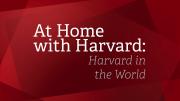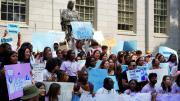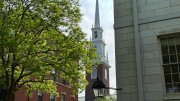This round-up is part of Harvard Magazine’s series “At Home with Harvard,” a guide to what to read, watch, listen to, and do while social distancing. Read the previous selections, featuring articles about income inequality, racial justice, immigration, and more, here.
As the world became more interconnected, so did Harvard: the University is more global than ever, with students, alumni, and faculty pursuing mission-driven research and work across the planet. And people across the world have, of course, developed perceptions and ideas about Harvard in turn. It would be impossible to cover all of the University’s international engagements (and internationally oriented teaching) here, but we’ve compiled some of the highlights from Harvard Magazine’s archives below, with a particular focus on developing countries and the Global South.
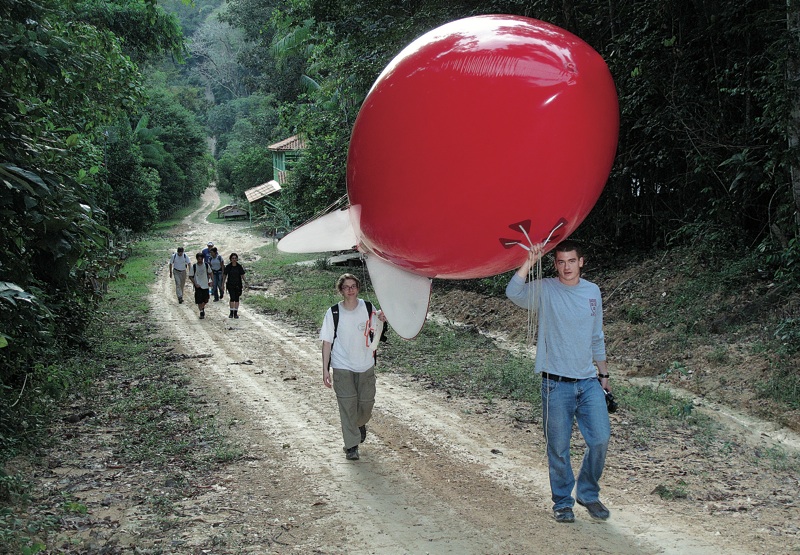
Newell and Horowitz walk the weather balloon to the launch site
Photograph by Jonathan Shaw
In 2011, thanks to a generous gift supporting Harvard Magazine’s coverage of the University’s international reach, I traveled to the Amazon rainforest with climatologists to write “Models—and Mud—in Amazonia.” Outside Manaus, Brazil, using tethered weather balloons, they were studying how the forest breathes, as well as the potential impact of climate change on plant ecosystem structure—the associations among trees and shrubs that often grow together. Global plant and animal diversity reaches its apex in the Amazon, so the stakes are high if a key ecosystem species is lost to deforestation, higher temperatures, or changes in precipitation. Although two Harvard professors led the research and classroom instruction, the students hailed from several universities in the United States and Brazil—an international next-generation of scientists-in-training learning together how to grapple with the study of a global problem.
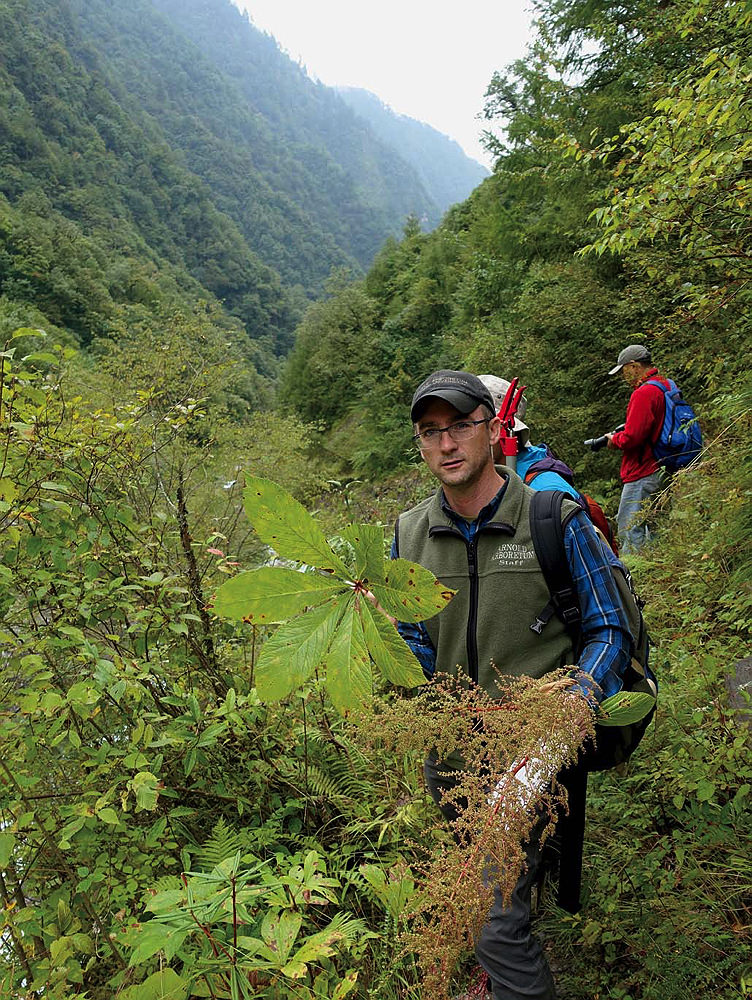
The Arnold Arboretum’s Michael Dosmann with a Rodgersia leaf and plumes of Astilbe grandis
Photograph by Jonathan Shaw
Globally, one in five plant species is endangered, threatened by changing patterns of temperature and rainfall, competition from invasive species, and loss of habitat. The risk that unique representatives of Earth’s flora could soon be lost has spurred a new commitment to plant collecting by a consortium of gardens, arboreta, and universities in China and the United States. For “Botanizing in the Mother of Gardens,” Harvard Magazine accompanied botanists from the University’s Arnold Arboretum, a living collection of temperate woody plants, on a 2017 expedition to China that traced in part the path taken a century earlier by Ernest Henry Wilson, who introduced more than 2,000 plants from Asia to Western horticulture. The modern explorers gathered numerous botanical prizes—none more precious than a rare beech, last collected by Wilson more than a century ago, that is now being cultivated at the Arnold Arboretum and partner institutions.
~Jonathan Shaw, Managing Editor
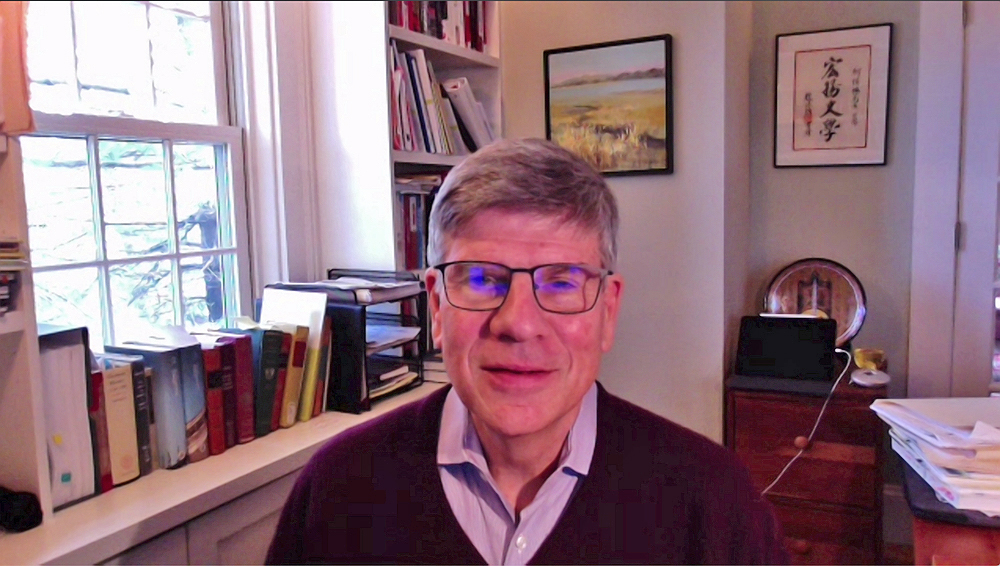
Professor and platform: William C. Kirby logs on to Zoom from home for his first remote teaching session.
William Kirby—a professor in both the Faculty of Arts and Sciences and Harvard Business School—is an expert on China’s modern development, and a wonderful link between the University and institutions of higher learning in China. Earlier this year, he was a guest on Harvard Magazine’s podcast, “Ask a Harvard Professor,” answering many questions about China’s national government, its aspirations, relationship with the United States, and its role in higher education.
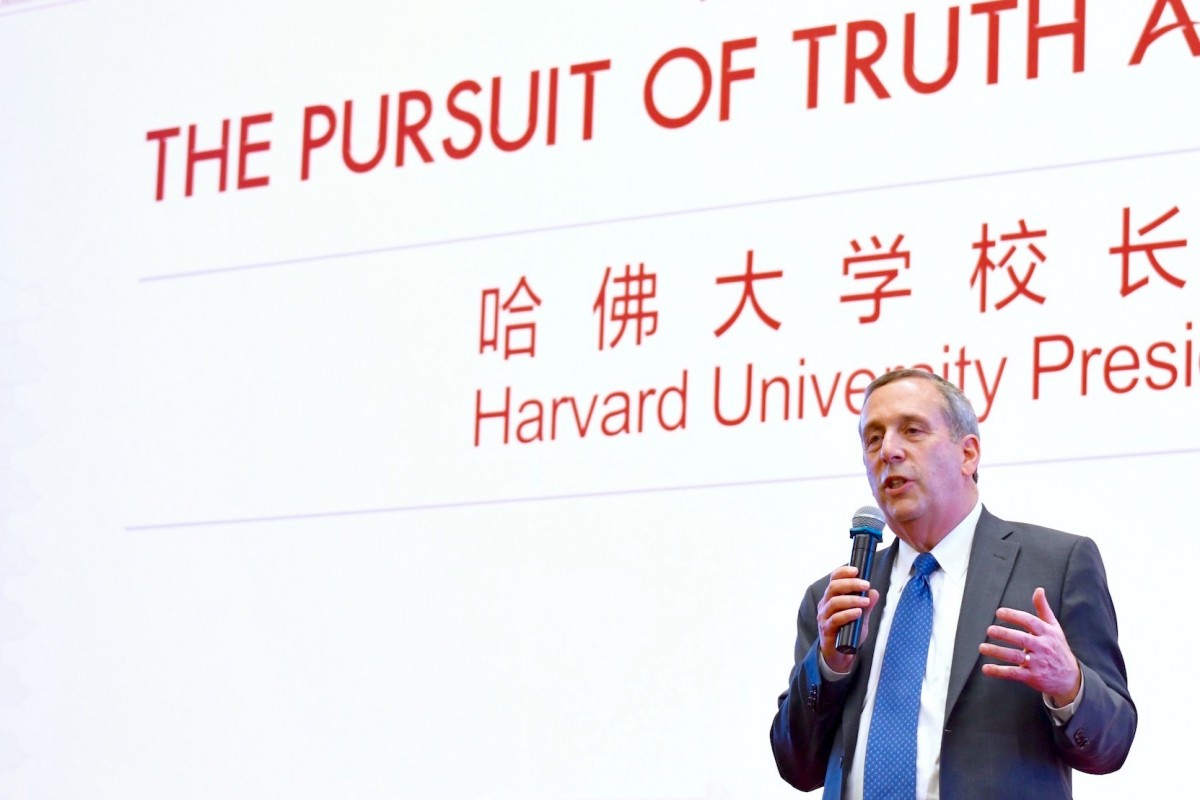
President Bacow speaking at Peking University on March 20
Photograph by Yi Wang/Harvard Center Shanghai
Last year, Harvard president Lawrence S. Bacow gave a memorable address defending academic freedom at Peking University in Beijing, and later met with Chinese president Xi Jinping. Harvard Magazine editor John Rosenberg lays out the context for Bacow’s visit in “In Beijing, President Bacow Affirms Academic Freedom”: “His visit comes at a time of sharp strategic and trade differences between the United States and China, and of increased control of discourse and dissent within the People’s Republic. The Chinese government is wary of landmark anniversaries in the country’s modern history that may serve as reminders of past unrest and as prompts to air disagreement with its current directions—among them: the student protests known as the May 4 incident and a subsequent movement toward political change (1919); the founding of the People’s Republic (1949); the uprising in Tibet, its suppression, and the Dalai Lama’s flight to India (1959); and the brutal suppression of pro-democracy protests at Tiananmen Square (1989).”
In “Into India,” writer Elizabeth Gudrais ’01 reports on Harvard’s growing, wide-ranging research on and in India. “Harvard-India links, largely focused on business and Mumbai, are diversifying in terms of geography and subject matter—and University scholars are making a mark on the country from the highest reaches of government down to the grass roots,” she writes. This is a kaleidoscopic look at the University’s growing interest in the world’s second most populous nation, beginning with a vivid portrait of a Graduate School of Design trip to Mumbai with architect and professor Rahul Mehrotra. It’s also a story of how South Asian immigrants have become much better represented in Harvard’s student body and faculty ranks, driving demand for change in the University’s teaching and research agenda.
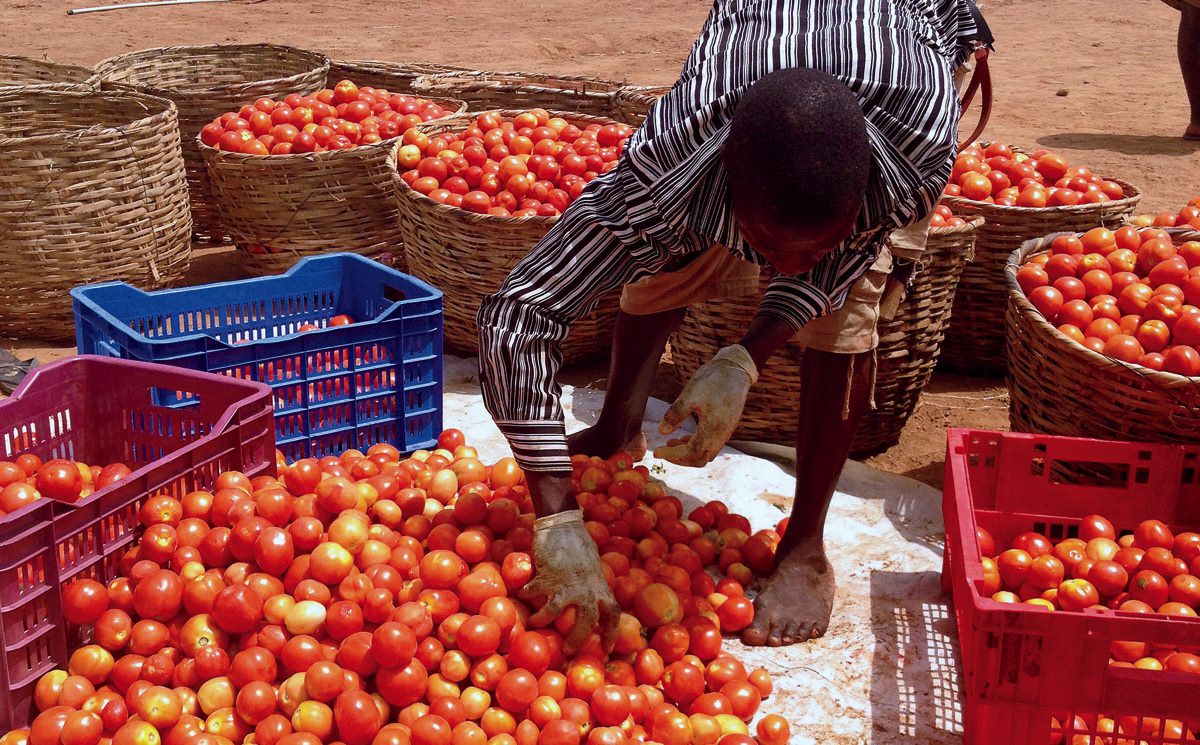
In Nigeria, Tomato Jos hopes to help improve farmers’ practices and sales, to boost their incomes.
Photograph courtesy of Tomato Jos
In “Business for the Other Billions,” John Rosenberg reports on the social-enterprise work—for-profit companies with a social mission—of Harvard Business School graduates and faculty in developing economies. “Imagine a simple triangle diagram of the planet’s population,” he writes. “A fortunate couple of billion upper-income people—in the United States and Canada, much of Europe, Japan, Australia, and prospering urban centers in parts of Asia and Latin America—occupy the apex. The invisible hand of market capitalism supplies this prominent minority with bountiful goods and services. But that leaves a lot of people out. At the very bottom of the pyramid, a billion or more humans live in poverty (on less than $1.25 per person per day), often depending on government programs and charitable aid to subsist. In between, pointed out V. Kasturi (universally, “Kash”) Rangan, live the low- and low-middle-income majority of mankind: perhaps four billion people who are entering or are already in the cash economy—but barely, with incomes of up to $15 per day.” This feature explores how to actually make markets work for this vast middle portion of humanity.
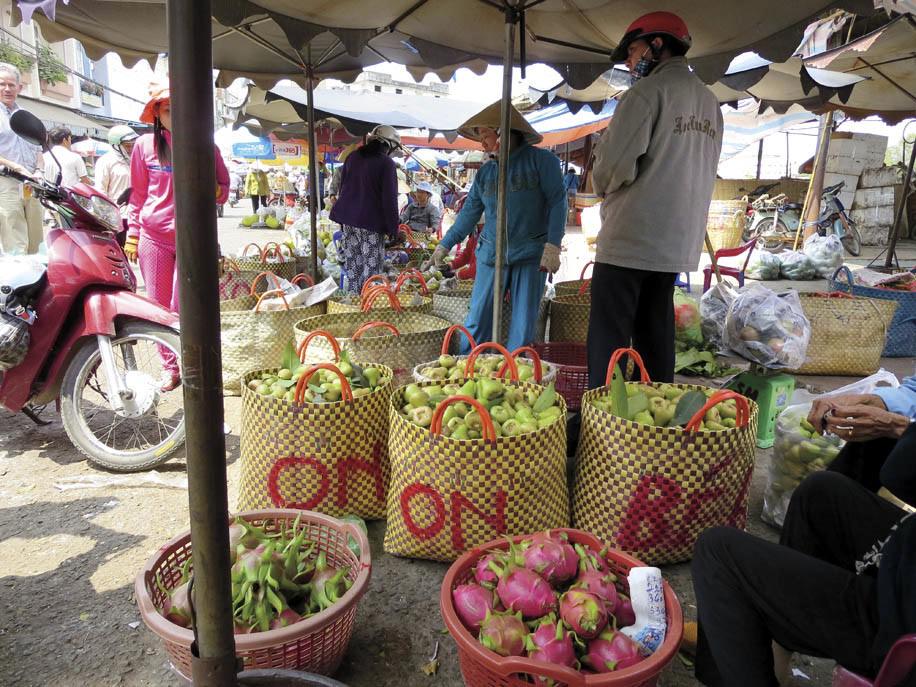
The wholesale produce market in My Tho
Photograph by Susan Bennett
And in “A Nation, Building,” Rosenberg covers Harvard scholars’ economic development and education work in Vietnam. When economist Dwight Perkins first started his work there in the ’80s, “The grievous wounds from the war with the United States hung over any possible cooperation.” But the nation badly needed the help: “Inflation exceeded 400 percent annually. In the winter of 1987-1988, large numbers of the northern and central population suffered from acute food shortages. The upheaval in eastern Europe the next year, followed by progressive dissolution of the Soviet Union’s COMECON trading block, which had propped up Vietnam’s government and economy, exposed the country to outright crisis.” Vietnam has since come stunningly far.
~Marina Bolotnikova, Associate Editor
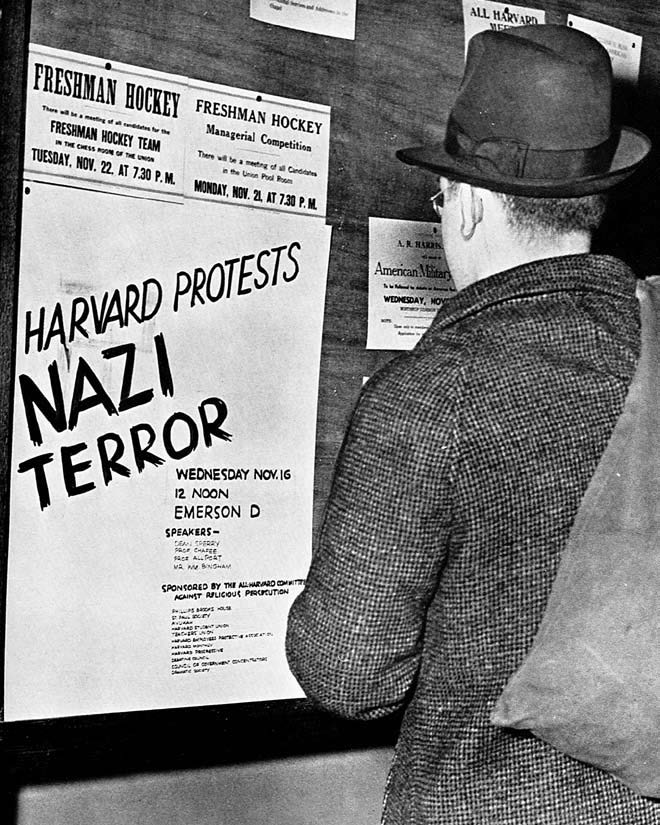
The Nazis’ Kristallnacht pogrom in 1938 prompted Harvard student activists to devise a way to rescue endangered European students. The Harvard Yearbook covered their fellow students’ efforts.
Courtesy of Harvard Yearbook
In 1938, 500 Harvard and Radcliffe students began an initiative that eventually brought 14 young refugees from Germany, Austria, and Czechoslovakia to study at Harvard—and two refugees, in a parallel effort, to Radcliffe. Their efforts led to a national grassroots movement that helped hundreds of persecuted Central European students find refuge and education at colleges and universities across the United States. Our 2006 article aimed to recall and honor the humanitarian efforts of these students.
~Kristina DeMichele, Digital Content Strategist
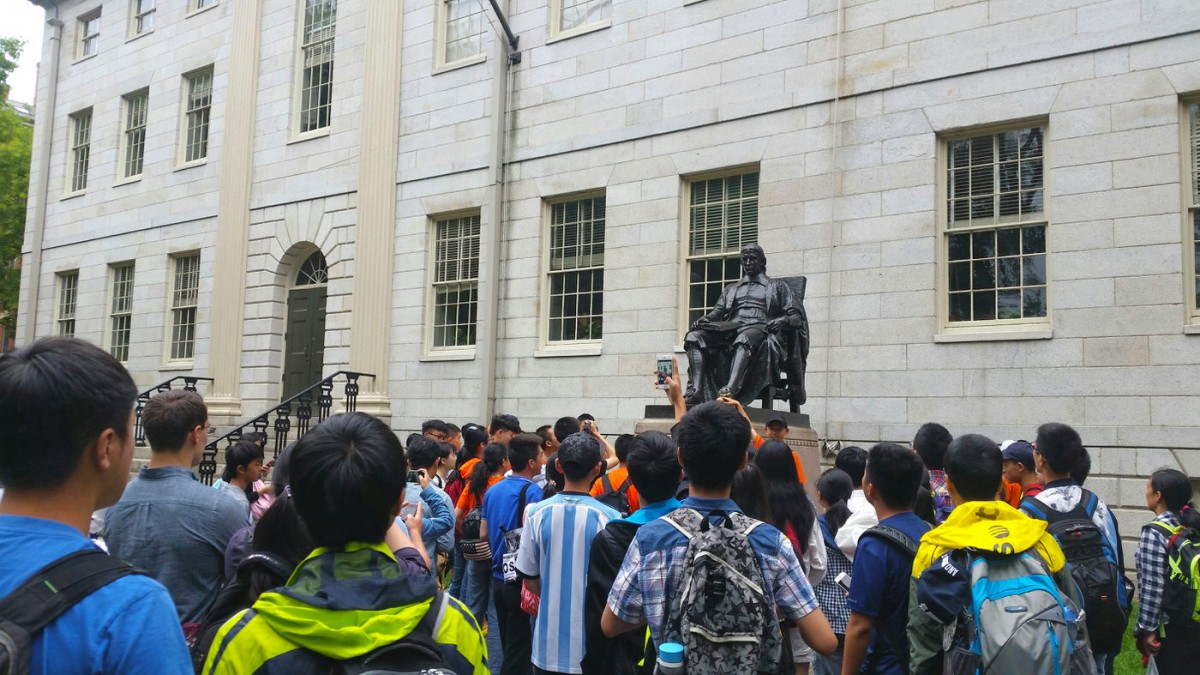
Chinese high-school students taking pictures of the John Harvard statue
Photograph by Zara Zhang/Harvard Magazine
“Touching the shiny tip of John Harvard’s shoe is almost akin to crouching in front of a golden Buddha—in both cases, worshippers are paying respect in the hope that the act will bring them good luck,” writes Zara Zhang ’17 of watching Chinese tourists in the Yard jostle for photos in front of the John Harvard statue in “When Harvard becomes 'Ha Fu',” a delightful dispatch about the University and its admirers in the People’s Republic. “Last weekend, I met with a group of Chinese high-schoolers on a U.S. college tour, and asked them their impressions of Harvard. ‘Mysterious,’ one suggested. ‘Unreachable,’ said another, with a helpless sigh.” Zhang narrates their impressions—and misimpressions—of Ha Fu, and imagines what might come to be, for both the students and the University.
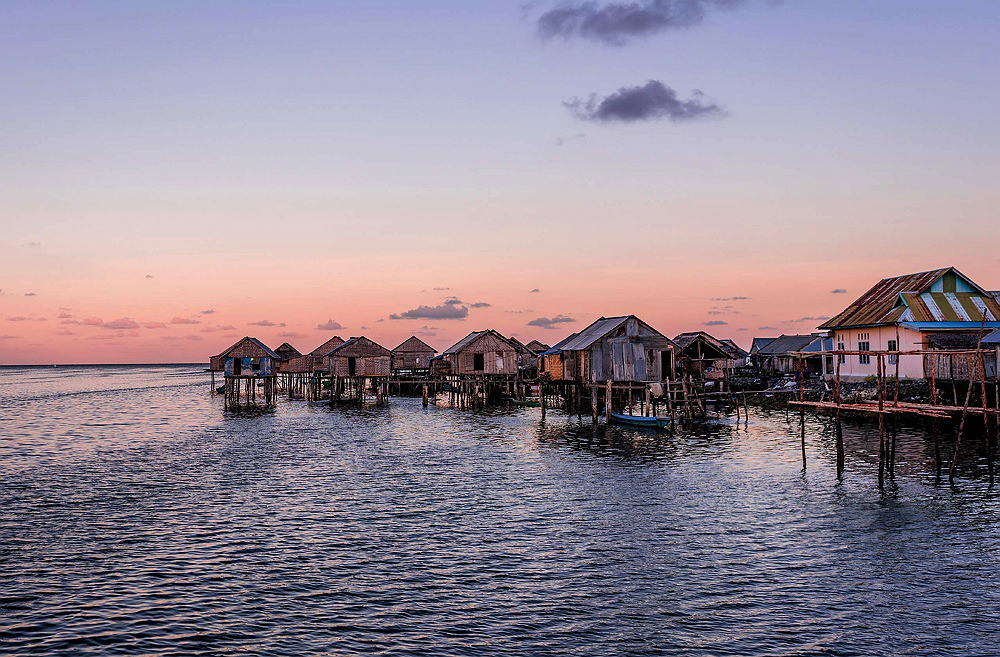
Sunset in Sampela, a village standing a few hundred yards from land in southwestern Indonesia. The nearest sizable island with an airstrip is a two-hour boat ride away.
Photograph by David Hu
The photo essay “Last of the Seafarers” was one of my favorite magazine pieces to work on—the images by David Hu ’16 of Bajau seafarers in southwest Indonesia are utterly stunning, and it was such a thrill to hear his stories about his stay with them, in stilt-supported huts off the coast of Sampela Island. The Bajau fishermen’s way of life is ancient, but endangered. Here’s how Hu began one of the progress reports on his stay: “I fully expected to find a place where survival depends on the whims of the ocean, where the line between hungry and full rests on what you can hunt and gather. The reality is that this line is growing even thinner.” Read the rest—and, more importantly, see Hu’s photographs.
~Lydialyle Gibson, Associate Editor
More from “At Home with Harvard”
- Spring Blooms: Your guide to accessing the Arnold Arboretum as the seasons turn in Boston
- Harvard in the Movies: Our favorite stories about Harvardians on screen
- The Literary Life: Our best stories about the practice and study of literature
- Night at the Museum: Our coverage of Harvard’s rich museums and collections
- Nature Walks: Walking, running, and biking in Greater Boston’s green spaces, even while social distancing
- Supporting Local Businesses: Our extensive coverage of local restaurants and retailers, and how you can support them during this time of crisis
- Medical Breakthroughs: Our best stories going deep into the ideas and personalities that will shape the medical care of tomorrow
- Rewriting History: From race and colonization to genetics and paleohistory, our favorite stories about the people reshaping the study of history
- The Climate Crisis: Highlights from our wide-ranging coverage of the environment
- Crimson Sports Illustrated: With 2020 winter sports ending early and the spring collegiate season wiped out almost entirely, we look back at Crimson highlights from past years.
- The Real History of Women at Harvard: Stories covering the admission of women, the Harvard-Radcliffe merger, the rise of women in the faculty ranks, Harvard’s first woman president, and more
- The Undergraduate: Our favorite student essays on the undergraduate experience
- The Secret Lives of Animals: From zoology and evolutionary science to animal-rights law to the joys of local wildlife, a selection of our favorite animal stories
- Harvard on the Small Screen: Our coverage of the creators, writers, and actors in your favorite TV shows
- Extraordinary Lives: From our “Vita” section, extraordinary profiles of authors, artists, activists, and more
- Great Legal Minds: Our favorite stories on the minds reshaping American law
- Harvard History through a New Lens: Some of our most notable stories about obscure, dark, or surprising episodes in Harvard’s history
- Health and Fitness: Our extensive coverage of Harvard’s breakthough health and wellness research
- Pride Month: Stories of Harvard's LGBTQ life, research and history
- Inequality in America: Stories of America’s extreme inequality
- The Immigrant Experience: A selection of our writing on immigration, displacement, and the global refugee crisis
